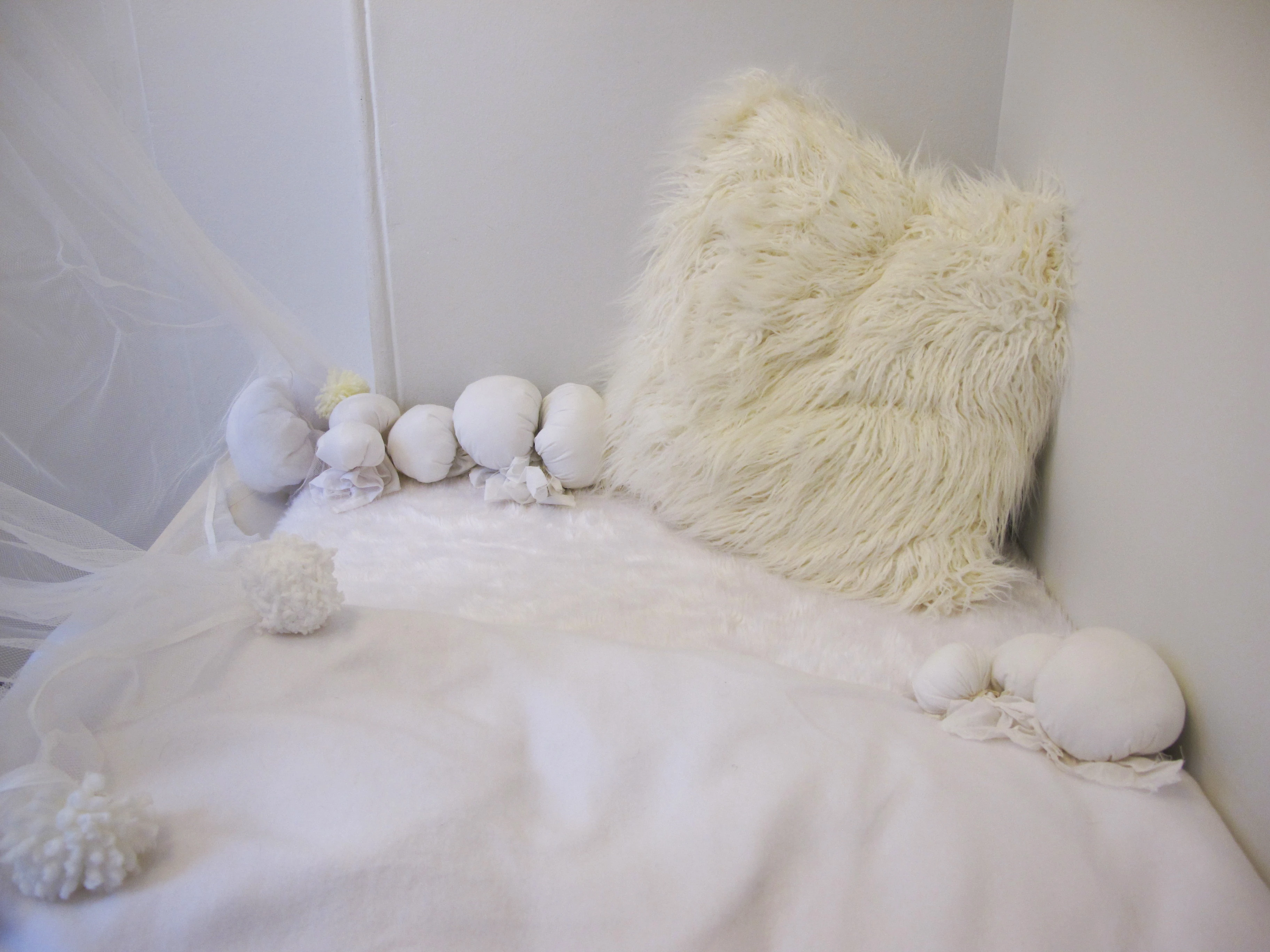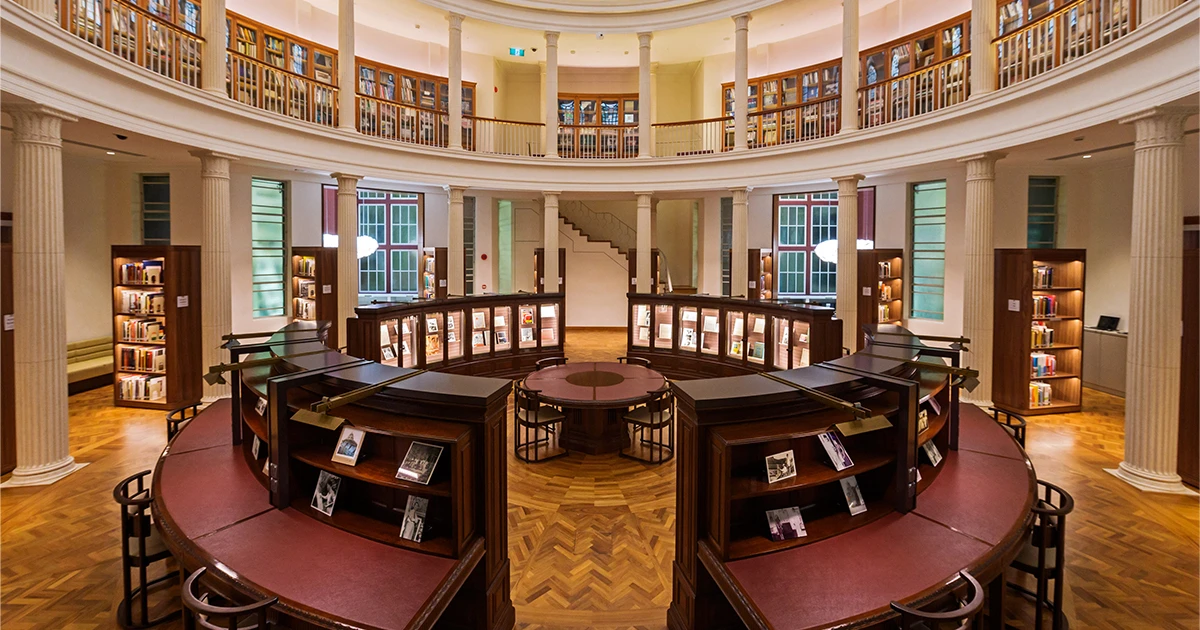Creating Clement Space: Collaborative Design for Accessible Inclusion
The Gallery worked with artist-researcher Dr Dawn-joy Leong to develop the Gallery Calm Room, a space for visitors that allows for and encourages self-initiated sensory rest and healing. In this article, Dr Leong shares about how her research on "Clement Space," as well as her lived-experience of disability, has informed the collaboration.

2015, Sydney, Australia. Image courtesy of the author.
Sensory Balance and Wellbeing
Sensory equilibrium facilitates mental and physical wellbeing. Modern city living is stressful—the lights, sounds, movement, smells, and crowds of Singapore’s bustling cityscape contribute to and exacerbate mental and physical stress. For autistic, neurodivergent and disabled people with hypersensitivity and other differences in sensing, a seemingly innocuous outing can result in sensory overwhelm, triggering strong physiological reactions like nausea, headache, dizziness etc. This may lead to “meltdown” states where there is a temporary loss of autonomous control over behaviour and bodily function. Consequently, many are afraid or reluctant to venture outside of their homes into unfamiliar and unpredictable public spaces, and hence become isolated and unable to partake of or contribute to society. It is impossible, and even unethical, to “train” persons with hypersensitivity to “overcome” their sensory systems, because it is intrinsic to their neurological and physiological functioning. However, providing safe, predictable and calm spaces as conduits for self-motivated respite and restoration will help greatly to alleviate sensory stress and anxiety, and make public spaces more accessible and inclusive to this marginalised community, as well as benefit the wider population.
What is a Calm Room?
The terms “Calm Room” and “Quiet Room” are commonly interchangeable, and refer to a purpose-built room for soothing anxiety and relieving overwhelm. The term “Calm Room” may sound more welcoming: a calm room is already a quiet room, because in order to find calm, the environment should of course be quiet; on the other hand, a quiet room may not necessarily be a calm room, as it could also be a “punishment room” filled with fear and agitation. Regardless of its name, a calm or quiet room should not be a place to isolate and punish, or be mistaken for a therapy, treatment or counselling room.
In recent years, more public spaces, especially arts venues, galleries and museums, have begun offering Calm/ Quiet Rooms. This is due to greater awareness around autistic and neurodivergent sensory traits, as well as the increasing mental stress and anxiety experienced by city dwellers in general. The emergence of these spaces address a growing need, and is a welcome development,. Unfortunately, many of these rooms are not optimally presented. For example, some are situated in noisy areas, or haphazardly put together, inadequately furnished and poorly maintained; others look like sterile seclusion rooms with padded walls reminiscent of psychiatric hospitals, or sensory play rooms suitable only for autistic children. Rooms that require prior booking or are available only on request present unnecessary barriers for people with urgent or immediate needs, individuals with social anxiety who prefer to avoid extraneous interaction, and persons who do not wish to draw attention to their disability or vulnerability. Sensory rooms with padded flooring exclude wheelchair users—a wheelchair user who wants to use such a room will have to be carried in and out by someone, which means a loss of autonomy.
How may Calm and Quiet Rooms be better utilised and become more accessible, inclusive and beneficial to a wider, diverse population?
The theory and practice of “Clement Space”—established in my PhD dissertation (2016)1—is one of a number of ways currently being developed by professionals, across different fields of expertise, who have lived-experiences of sensory idiosyncrasy and disability. “Clement” is an old English word denoting a posture of grace and mercy; “Clement Space” refers to mental and physical spaces that encourage and facilitate self-initiated sensory rest and healing for mind and body, with principles based on natural autistic self-care strategies and inspired by my autism sensory assistance dog, Lucy Like-a-Charm. Intended to be a forgiving and gentle space, it can be simple and portable, like a sensorially comforting object that the owner carries with them to activate calm, or a semi-permanent to permanent structure offering elements that encourage rest, relaxation and rejuvenation. Clement Space is a gift from the autistic realm to everyone, not just the autistic.








A Calm Room in National Gallery Singapore
Museums, art galleries and libraries are quiet spaces, and thus already commonly preferred by people with heightened senses. There are also many small nooks and corners scattered around National Gallery Singapore that can serve as pockets of calm. Why, then, should a place like the Gallery have a Calm Room?
The Gallery Calm Room offers much more than casual quietude. It is a dedicated, specifically designed, fully accessible space providing a sense of privacy that the other incidental “rest stops” do not, as the latter are situated in areas where there will inevitably be some human traffic, when people walking to and from exhibitions, restaurants or toilets etc.
The two individual seating pods in the Calm Room support enhanced solitude and yet are easily accessible: one is slightly raised for smooth transfer to and from a wheelchair, or if one has mobility needs that prevent them from bending; the other is for those who prefer to be seated nearer the ground. For those who wish to sit together, for example, parents and their child/children, there are communal seats that can be arranged in many different configurations. Other features in the Calm Room include artificial green plants that provide subtle demarcations for privacy, soft cushions, sensory kits and weighted blankets on loan for use within the Room, adjustable lighting (colours and intensity) and room temperature, as well as soothing soundscapes and video projections on request.

Another question I am sometimes asked is, “Why is the room open to everyone, instead of only serving autistic children and their parents?”
Here is my candid reply: Why exclude when we can include? By making the Calm Room available and accessible to everyone without exclusion, the Gallery remains true to their commitment towards an encompassing inclusivity. In this way, the divide between disabled and non-disabled can be gently dissolved, while also welcoming those who may not otherwise have the opportunity or support needed to access such spaces with dignity.
Co-Creating Access and Inclusion
When I was approached by the Gallery to be part of this groundbreaking project as the community consultant, I was thrilled, excited and honoured. This was not the first significant endeavour towards progressive, activated inclusivity by the Gallery that I was involved in. In fact, the arts and disability community recognises the Gallery as an important partner and ally in the progressive journey towards a truly accessible and inclusive arts scene for all in Singapore—it not only welcomes disabled and diverse patrons and consumers of the arts, but also supports artists with disabilities through commissions and opportunities to develop stronger artistic practices. In other words, the Gallery is actually “walking the talk,” aligning the institution with the motto adopted by disabled persons all over the world, “Nothing About Us Without Us.”
Instead of the traditional prescriptive approach, where non-disabled “experts” decide what is appropriate for disabled end-users, the Gallery Calm Room is the result of a dynamic partnership with the neurodivergent community, from its very conception through to its final presentation. Based on my principles of “Clement Space,” the room was carefully developed in consultation with persons from the neurodivergent and disabled community through a series of focus groups and the use of Sensory Probes2, adapted from the methodology employed in cultural probes. Instead of a lengthy questionnaire with many words, I developed Sensory Probe kits, comprising differently textured fabrics, pictures of furniture, interior designs, and a workbook in which participants could sort and paste their preferences, so that participants could communicate their ideas and suggestions more directly and organically, via sensory responses. Participants were also invited to advise on the design and layout, as well as help test and select the materials, colour scheme, furniture, lights, as well as suggest additional features like sensory kits and weighted blankets.
This innovative approach, where a project of this nature was co-led by a professional with a lived-experience of disability, and included constructive input from the neurodivergent and disabled community, is a first in Singapore (and novel in many parts of the world). Although there is still much to learn and improve on, and constraints to overcome, the Gallery Calm Room is embraced by the neurodivergent community as a space co-designed with allies who truly believe in the spirit of inclusion and are willing to help make it happen (not just paying lip service to a trending ideology); the team behind the Calm Room is proud to be able to contribute such an important and beneficial product to the rest of wider society.
Editor's note:
The Gallery Calm Room is located at Level B1 of the City Hall Wing. Find out more about using the room and its key features here.
Notes
- Dawn-joy Leong, “Space of Mind, Scheherazade’s Sea: autism, parallel embodiment and elemental empathy,” (PhD dissertation, University of New South Wales, 2016), accessible at https://dawnjoyleong.com/phd-dissertation-2016/space-of-mind/
- My Sensory Probe kits were adapted from the method of Cultural Probes where, instead of gathering data from participants using a list of questions in a survey, physical objects would be sent to participants so that they may respond to these objects using their immediate senses. The probes would be returned to the researcher, who will analyse and interpret the responses. This is a more direct approach for the purposes of gathering sensory information, and especially suited to autistic/ neurodivergent persons who do not respond as optimally to and with language.












